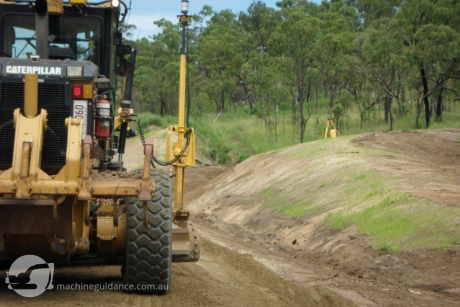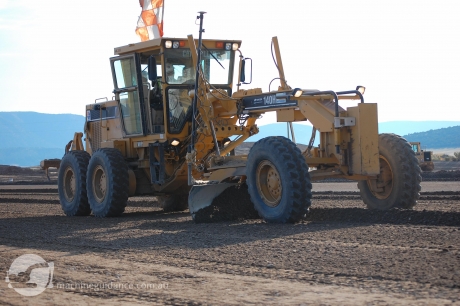Introduction to Machine Control
Derrick Koome, Survey Engineering Consultant at Cheswick (Nairobi, Kenya) provides a brief overview into machine control; the future of construction. Topics include an introduction machine control hardware, system functions, contractor benefits and applicable machines.
Published: March 2017
Author: Derrick Koome
What is machine control?
In the most absolute layman’s way of putting it, machine control is the use of positioning tools and a display to provide a construction machinery operator with a reference between the position of the bucket or blade and the target grade.
A myriad of hardware and software solutions exist with the sole purpose of determining a machine's current position on the earth and then comparing that position with a desired design surface. The difference is then displayed inside the machine cabin allowing the operator to easily and efficiently determine what is required to create the intended design on the ground.
What are the positioning tools used?
The positioning tools used for machine control are GPS, total stations and laser. GPS and machine control work well together on large bulk earthworks operations and help achieve vertical results accurate to +/- 30mm. Laser transmitters emit a 360 degree beam of light on either a level plane, single slope or dual slope. This beam can be read by the machine control system to calculate an elevation accurate to +/- 10-15mm. Total station positioning is the most accurate positioning solution capable of achieving results of +/-5mm. It is usually reserved for final pavement operations.

image1
What is GPS?
GPS stands for Global Positioning Systems. It is a worldwide satellite based positioning system consisting of 24 satellites, owned and run by the United States department of defense. It was initially developed as a military tool but its signals were made open to the general public in May 2, 2000, when Bill Clinton announced the end of Selective Availability which deliberately introduced an error of 100 meters in the civilian signal.
GPS is not the only available satellite system. Other systems exist such as GLONASS (Russian), BEIDOU (Chinese) and GALILEO (European Union). The generic term for all the above systems is GNSS (Global Navigation Satellite Systems).
How does GPS in machine control work?
GPS receivers are mounted on the outside of the machine to maintain a clear view of the sky. A separate GPS receiver is set up on a known position in the ground. This receiver is known as the base station and its purpose is to transmit corrections to the GPS receivers mounted on the machinery. These corrections are necessary to achieve cm accuracy since GPS signals experience interference on their journey to the earth.
Once a position has been calculated by the receiver on the machinery it is transferred throughout the machine to determine the exact position of the machines ground-breaking attachments. The user interface or display is mounted inside the machine cabin. The display receives and processes all the information from the GPS receivers to calculate the machines position. The display also contains the design information and can compare the current and desired positions to calculate a horizontal and vertical difference. This design information is prepared by a civil engineer based upon the topographical survey of the area in question performed by a surveyor.

Image2
What are the benefits of machine control?
Contractors who have introduced machine control in their operations report that their projects are completed twice as fast. This is because of the following advantages:
• Higher machine productivity and efficiency.
• Lower operating costs such as fuel and maintenance and repair/replacement of blades, teeth, tires etc.
• Lower surveying costs since there is less staking and elimination of grade checking.
• Reduced material costs since the ones available are used efficiently.
• Improved overall job efficiency since the achievement of the design grade is reduced to very few workers.
• High job accuracy (mm precision).
• Reduced rework.
What type of construction machinery can it be used on?
The list of construction machinery where machine control can be applied is endless. It applies across the broad spectrum of earthworks machinery such as bulldozers, excavators, graders, compactors, pavers etc.
Derrick Koome’s original article published on LinkedIn can be found at www.linkedin.com/pulse/introduction-machine-control-future-construction-derrick-koome

